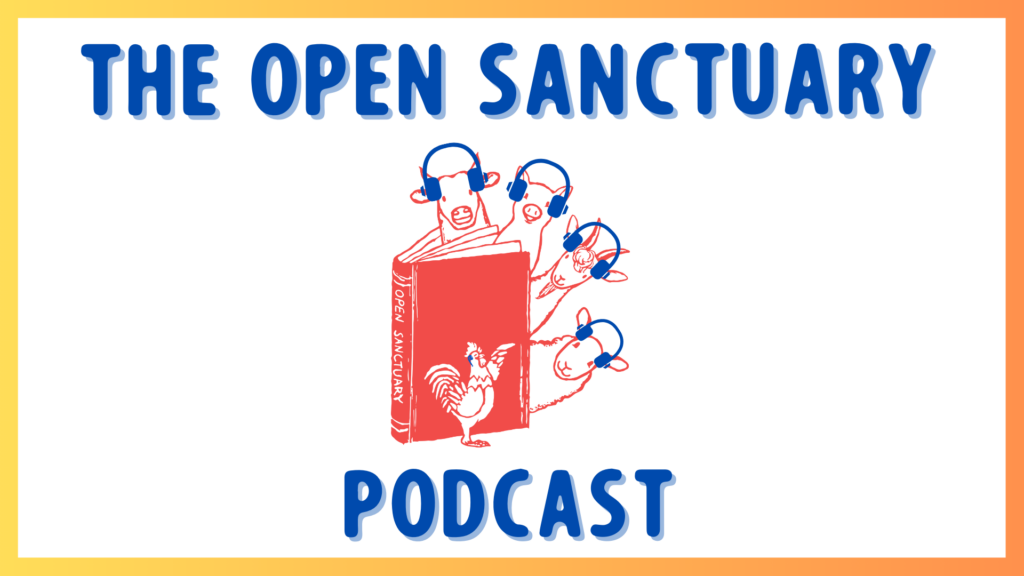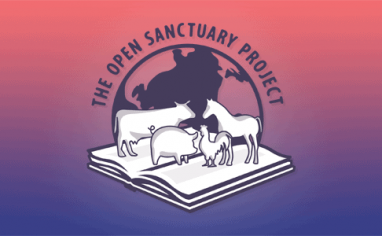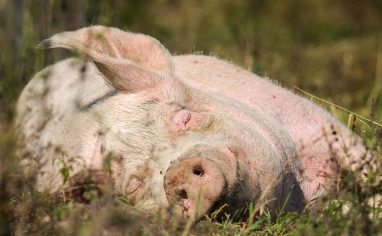
Subscribe To The Open Sanctuary Podcast
If you’d like to get the latest episodes of The Open Sanctuary Podcast, you can subscribe for free on all Podcast platforms, including Apple Podcasts and Spotify!
Episode Notes
Senior Advisor Tara and NonprofitA non-governmental organization whose primary purpose is something other than selling goods or services. Specialist Julia discuss some common myths about roosters that perpetuate rooster stigma. We address several common misconceptions, stigmas, and stereotypes about roosters, dismantle them one by one, and offer a new framework for understanding rooster behavior.
—
This Episode’s Referenced Open Sanctuary Project Resources:
Introduction To Rooster Behavior Part I: Dismantling Rooster Stigma
Maintaining A Healthy Rooster Flock
Breaking The Mold: How Animal-Centered Design Can Transform Sanctuaries
Fun Facts About Roosters Infographic
Dismantling Rooster Stigma Infographics
The Open Sanctuary Project’s So You Want To Rescue A Rooster Brochure
Episode Transcript (Auto-GeneratedThe following content was transcribed through an automated process and may contain transcription errors or misspellings.)
Julia Magnus: Greetings and welcome to another episode of the Open Sanctuary podcast. Today, our senior adviser and I, the nonprofit specialist and fellow bird nerd, are here to talk about roosters. You might wonder, why are we talking about roosters specifically? It’s because farmed animal sanctuariesAnimal sanctuaries that primarily care for rescued animals that were farmed by humans. are way too familiar with the plight of the rooster. Every single day, countless roosters are killed en masse in their first day of life at hatcheries simply for being male. Sanctuaries get constant calls about loose chickens, and they know that they are very likely roosters who were purposely dumped. And it’s probably fair to say that in the sanctuary world, roosters are possibly the most frequent owner surrenderThe act of transferring guardianship of an animal to a person or organization, especially via legal contract. request as well. So, because of this, Tara and I co-authored a comprehensive resource on dismantling rooster stigma, which you can find on our site by searching ‘rooster stigma’. So, that resource addresses several common myths, stigmas, and stereotypes about roosters, and dismantles them one by one. And we try to offer a new framework for understanding rooster behavior. So Tara, why don’t we start by talking about the common misconceptions about roosters and your long history of working with these birds? What are some of the common stigmas that you’ve encountered?
Tara Hess: Well, first there’s the general bird stigma because roosters are birds. And so there’s unfortunately, among many folks who haven’t had the opportunity to be around these birds, this idea that birds in general are stupid and maybe have no personality compared to mammals. So, roosters have the double whammy of just having the general bird stigma, plus some of the stigmas that apply more specifically to roosters: that they’re really loud, that they’re aggressive or mean, whether that’s to each other, to humans, or to hens. They just really get this reputation again among people who aren’t thinking critically about who they are or haven’t had the opportunity to be around them that they are maybe not that fun to be around.
Julia Magnus: I feel like that’s so common, the concept that somehow these birds are stupid and that birds generally are stupid or have no personality. Now, all that being said, we know, as caregivers, both of us have cared for roosters for significant portions of our lives. And we know that both the myth that they’re stupid and that they have no personality is laughable. Like, those are laughable myths. I think that the thing is, is that we have to be careful when we talk about this because it can make a lot of sense to explain facts about roosters in terms of their cognition, in terms of their senses, in terms of their abilities. But at the same time, while we explain that those myths are factually untrue, it’s hard to convey that in a way that also at the same time is respectful of the fact that no being should be subject to exploitationExploitation is characterized by the abuse of a position of physical, psychological, emotional, social, or economic vulnerability to obtain agreement from someone (e.g., humans and nonhuman animals) or something (e.g, land and water) that is unable to reasonably refuse an offer or demand. It is also characterized by excessive self gain at the expense of something or someone else’s labor, well-being, and/or existence. based on their cognitive abilities or lack thereof. That we fundamentally as an organization believe in the rights of all beings to be free from exploitation regardless of their abilities. All that being said, it does seem like at times when you’re communicating with the public and especially trying to do outreachAn activity or campaign to share information with the public or a specific group. Typically used in reference to an organization’s efforts to share their mission. and explain why roosters are the way they are and how they behave and where their tendencies come from, that it comes from a basic understanding of their abilities, their biology, their role as members of their family. I don’t know. You probably have thoughts.
Tara Hess: I mean, yeah, I feel like I totally understand what you’re saying and this is something that we touch on in the resource. It’s hard to find that balance, I think, of stating the facts. So, if someone is saying roosters are stupid, there is research that talks about the intellectual capabilities of chickens, but like you said, really that shouldn’t matter. It’s like it should have no bearing on the fact that these birds are some of the most severely mistreated and misunderstood animals that farmed animalA species or specific breed of animal that is raised by humans for the use of their bodies or what comes from their bodies. sanctuaries care for and advocate for. So, I’m glad you brought that up because I think it’s an important point to make because it can very easily veer into a murky area of seeming like you’re justifying that this specific animal deserves to be treated well because look what they can do. You know, they’re as smart as, like, let’s equate them to like a human in terms of their intellect or whatever, which just gets problematic for a variety of reasons, but it’s hard when you’re dealing with these misconceptions and stereotypes and dismantling them. You want to be able to address them, but I think also just really planting the seed that it doesn’t matter. Like, even if we couldn’t disprove the fact with science, it doesn’t matter.
Julia Magnus: Yeah, I totally agree. And one of the things that frustrates me constantly as a rescuer of birds generally, but specifically mostly roosters, I also have rescued parrots, you know. So parrots are often revered by humans for their ability to speak quite literally in our language. They do tricks. They’re like, you know, they’re glorious in their coloring, feathering, and they’re fun and whatever. But you know what? That’s like an instance where this discussion of how they relate to humans actually backfires for parrots because in addition to all those really special traits that parrots have, they’re also wildly destructive, very hard to care for, extremely loud, and many of them can bite off your finger. As somebody who’s actually been bitten in the eye socket by a parrot and had to go through that fun time. It’s just one of the things that always sticks in my head is, as relatable as certain bird companions may be to humans, that may make it extra special challenging to deal with them as caregivers, and parrots are wild animals. Roosters are domesticatedAdapted over time (as by selective breeding) from a wild or natural state to life in close association with and to the benefit of humans animals, and there’s a massive difference between the two in that sense in terms of loudness. Okay, let me just say that living with four large parrots, two of whom are large cockatoos, one of which is a greenwing macaw and the other is an African grey. The noise levels, nothing compares to that. A rooster doesn’t come close. I also live with a dog. A rooster’s noises don’t come close to the volume of a dog who’s really intent on catching or yelling at a squirrel. So, I don’t know. It just feels like roosters actually, as somebody who is caring for a house rooster… You know, I’m not going to ask you like, would you rather have a parrot or would you rather have a rooster, but I’m sort of curious on your take on that.
Tara Hess: Yeah. I mean, again, I feel like it would do roosters, I think, a disservice to be like they’re not ever, ever, ever loud, you know, because people should know what they’re getting into when they’re caring for someone. But I do think their crow is often used as some sort of justification for them not to be in certain places, to back up why someone might not like roosters or want to care for roosters is because they’re so loud. I used to live with a rooster. We spent about three years sharing our home with a wonderful rooster named Cantaloupe. And were there times that he woke me up? Granted, I also just live with cats who are pretty quiet unless they’re having a major spat. So, yes, he was louder than the cats. He was not louder than dogs I’ve cared for in the past who would wake me up in the middle of the night barking sometimes. He was also pretty predictable in terms of when he would crow. Not that he only crowed in the morning, which I know is a misconception that folks have about roosters, but for the most part you had an idea of when he was going to be crowing. His crow compared to the trucks that go down my street, it’s like give me a rooster crow any day over trucks going down the street. Somebody doing target practice. Like there are so many noises. Oh my god. Leaf blowers, just like the noises that are acceptable in certain places. I would much rather have a rooster companion crowing any day.
Julia Magnus: Oh my goodness. I totally agree. I have the same issue. Like there are ordinances where I live in the South Side of Chicago and we have no restrictions around keeping roosters here. So I have three and I am woken up not by the roosters, but by the leaf blowers and the lawnmowers and the motorcycles and the neighbor on his whatever that vehicle is that is like some strange quad whatever that’s blaring music. I can hear the neighbor’s baby crying before I hear my rooster. And certainly the parrots are way, way more able to make a ruckus than the three roosters that we live with here. You know, it feels like the noise is tied into some other generalized factors that go into rooster stigma. It’s somehow that they’re birds. They’re outside birds. They’re birds who are stigmatized for being aggressive. So, why don’t we talk about aggression a little bit? I mean, I know why this is. I feel like I know why this is. It’s because of cockfighting. Thank you. People do that. It’s a perpetuation of this, and it’s a practice that basically takes advantage of rooster bodies, rooster hormones, exaggerates and ameliorates those qualities of roosters by often doing things like giving them drugs or keeping them in contexts that are inappropriate for them that may be very psychologically stressful and traumatic to them. And somehow it’s a ubiquitous practice that has taken place since the dawn of time. It’s happened since the dawn of time and it happens all over the world, across cultures, across communities. So, it feels like many of our preconceptions about roosters stem from that.
Tara Hess: Yeah. Yeah. I totally agree. You know, you mentioned the way that cockfighting exploits natural rooster behaviors and then like amplifies and manipulates them and I think for so many folks that part of it is lost where they think that what happens in cockfighting would just happen naturally should two roosters encounter each other, which isn’t the case, or they’ll hear some story about a rooster in those contexts who kills a human around them, you know. And I feel like with so many things folks don’t read all the details or you know they just see like the headlines and are like, “Oh my god.” And that just further, I think, reinforces a notion that someone might already have just from being in this society that like, “Oh, roosters are aggressive.” I mean, yes, they kill people. They are so aggressive. You know, like check, like I can further reinforce that that is true. And all the details about how they are exploited and manipulated, I think, get lost because like other farmed animal species, many people never have the opportunity to meet these animals. And if they do, they don’t meet them usually in a setting that allows them to be who they are. You know, because we’re all affected by the setting we’re in, the things that are happening to us, obviously, we’re affected by that. Roosters and other animals are affected by that. So, if you only see a rooster in a specific context that’s not a sanctuary, you’re maybe going to get a different picture of them because their needs aren’t being met or whatever else is going on with them. It also kind of ties into some of the things that we talk about in avian care generally speaking and also specifically we have resources on rooster flocks because in the resource that we did together we talk about the background of roosters. There’s also a specific resource on how we got here, how chickens got here, where they came from. And I think a lot of folks don’t realize that chickens are descended from jungle fowl. So, they’re quite literally used to an environment where they have a lot of shelter. They aren’t really like always the greatest flyers. They can fly, but they’re not like an eagle, but they do live with cover all around them. And there are sanctuaries who’ve designed specific environments that are tailored to their background as jungle fowl. And while chickens have been largely domesticated by humans and their bodies have been manipulated in many ways to serve human purposes, I think that we probably can agree that they still very much crave that background, that context of where they came from and being safe. And let’s boil it down to this. Chickens are prey animals. They’re prey animals. They are not predators. They are prey animals. And they always were that way. They still are that way. And as domesticated beings, they have even more need of protection, safety from predation. And so when you get to the question of like you were discussing, environments where they can be who they are, I think that’s important to consider. If you have a rooster free-ranging in a backyard chickenThe raising of chickens primarily for the consumption of their eggs and/or flesh, typically in a non-agricultural environment. context where they’re surrounded by predators, that rooster is likely to behave quite differently than a rooster who is in a space where he has plenty of cover, where his entire environment is predator protected, where his family he knows is safe, and that makes a world of difference. And just to go a step backwards to something that you said, just because I think some people probably got this, but I just have heard it so many times, but just to be 100% clear: roosters are chickens. Like, sometimes just that little thing gets lost where it’s like roosters and chickens. Like no, roosters are male chickens. So when we say that chickens are prey animals, we mean males and females. They’re all prey animals. So yes, roosters are often the protector of their flock, but that does not change the fact that ultimately they are a prey animal and they are vulnerable to predation. So I just wanted to get that in.
Julia Magnus: I totally agree. I’m so glad that you raised that because that kind of goes to one of the points that we try to make over and over in this resource and in all of our discussions about roosters, rather, is their behavior is fundamentally not aggressive. Their behavior is self-defensive. They are protecting themselves and they are protecting their family. And so if you understand their basic nature as a prey animal… Like so many different beings want to eat and kill chickens. It’s so important to understand that nothing they are doing is because they hate you. Nothing they are doing is because they want to hurt you. They are acting in self-defense as prey animals. So it probably gets us to some of these other points we want to talk about: the myth of aggression.
Tara Hess: Yeah. I think the notion of aggression, obviously, we already talked about cockfighting. I think there are just so many things in our society that we see in like cartoons from when we’re kids that perpetuate this notion that roosters are aggressive. But also, I think for folks who aren’t bird people, like if you don’t understand birds or you’re not comfortable with birds, if you’re scared of them, I feel like you’re even more likely to miss that whole part that they’re prey animals, that they’re vulnerable because you’re scared of them. And so then you sort of interpret all of their behaviors through the lens of like this is someone I should be scared of as opposed to the lens of this is a prey animal. Everybody wants to kill chickens. I feel like they’re so unique in that they’re prey animals and yet they’re fierce protectors of their flock, which is totally exploited and we talk about that in the resource. And so I feel like the combination of all the messages we get from society at large, plus the way they present themselves as they’re protecting their flocks, it’s so easy, I think, for folks to see that and think they understand what they’re seeing and to misinterpret it as just straight up full-fledged aggression. I feel like one area where this comes up doing rescue in Chicago with chickens, one thing that I see a lot is folks reaching out being like, “The roosters are being aggressive to my hen or to my hens,” or that I also feel is just a function of a basic misunderstanding of how the dynamics work within a flock, and it’s something we talk about at some length within the resource, but I think that a lot of folks even misconstrue just basic courting and mating behavior between birds as aggression.
Julia Magnus: Totally, and it’s frustrating to me because I’m like, no, that’s, that’s quite, that’s, that’s how they do it, and it is 100% possible if you have certain kinds of birds matched up together that a very large rooster could potentially hurt a hen that they are trying to court and mate. But that is a situation that can be avoided, and also just general care of your rooster. Making sure that their claws and their spurs are carefully trimmed and blunted off with grinders or other methods can help prevent any kind of incidental harmThe infliction of mental, emotional, and/or physical pain, suffering, or loss. Harm can occur intentionally or unintentionally and directly or indirectly. Someone can intentionally cause direct harm (e.g., punitively cutting a sheep's skin while shearing them) or unintentionally cause direct harm (e.g., your hand slips while shearing a sheep, causing an accidental wound on their skin). Likewise, someone can intentionally cause indirect harm (e.g., selling socks made from a sanctuary resident's wool and encouraging folks who purchase them to buy more products made from the wool of farmed sheep) or unintentionally cause indirect harm (e.g., selling socks made from a sanctuary resident's wool, which inadvertently perpetuates the idea that it is ok to commodify sheep for their wool). to your hens as a function of courting and mating behavior. But it’s, I feel like a lot of times roosters can’t do right. They can’t do anything right without people seeing them and the way that they’ve been taught or ingrained to see them, and it’s deeply frustrating. You mentioned roosters being highlighted in the news at times as having killed humans. Well, I feel like I’ve seen a number of those stories over the years and what they typically have in common is cockfighting. And so usually the common thread in those situations, as we mentioned in cockfighting operations, roosters’ bodies and their psychology are wildly manipulated by humans to take advantage of them. And one of the things that folks do will be to cut off spurs bluntly and then affix gaffs, which are sharp knives, to them. And that’s usually where casualties come from. I don’t actually think I’ve ever heard of a rooster actually killing a person outside of the context of cockfighting. So now we have covered a lot of questions around the misconceptions that surround chickens, around the stigmas that plague roosters, around the questions that every sanctuary, rescue, or any other organization that accepts roosters will face at a certain point or another. While we’ve discussed the ways that those myths and stereotypes are false, there’s a whole another realm involved when it comes to talking about how we can dismantle the stigma around roosters. So, the next part of our podcast series on the question of roosters will talk about those questions and how you can as an organization help support roosters, change the narrative around them in ways that may be helpful.

Got A Podcast Idea? Contact Us!
If you have a topic or question you’d love to hear our staff address on The Open Sanctuary Podcast, please get in touch via our contact form!








